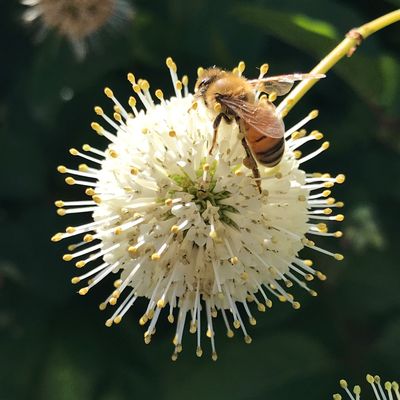In the Garden: Ways to deal with pests other than with insecticides

I like to encourage gardeners to deal with their insect problems through organic means. Instead of reaching for an insecticide, it’s an opportunity to approach the problem creatively and in a more environmentally friendly way. We don’t always have to kill insects in order to win the battle.
Setting up physical barriers that keep certain insects away from a crop is a simple solution. For example, floating row cover or small-mesh insect netting can be very effective at keeping aphids and cabbage worms away from your broccoli plants. Be sure to put it in place as soon as you plant the seeds or seedlings.
Since cabbage family crops don’t require pollination, you can leave the cover in place for the entire season and enjoy a bug-free harvest. I also use row covers over beets, spinach and Swiss chard to keep leafminers away.
Occasionally, I have to resort to hand-picking insects, although it can be tricky to catch the little rascals. I fill a small bucket with water and add a squirt or two of dish soap. When I spot a damaging insect, I can quickly flick it off the plant and into the bucket. The soap breaks the surface tension on the water.
This means the insect drops to the bottom of the container and drowns. There are times where you might have to up your game by using an organic spray. It’s easy to think that because they’re organic, these products can be used freely.
To be honest, I haven’t had much experience with organic sprays because I’ve usually been able to address my insect problems with the above methods or by making homemade traps. It was only when I researched all of the sprays while writing “The Vegetable Garden Pest Handbook” that I discovered something important: Just because a product is organic, that doesn’t mean you can ignore the label directions. Some of them can have unintended, negative impacts.
Take neem oil, for example. For years, I’ve heard gardeners tout this organic spray, and I assumed that it was completely safe to use. When I checked into it, I discovered that it can kill pollinators.
Does this mean you can’t use it? No. It means you need to apply it when pollinators aren’t active, either very early in the morning or late in the day. You shouldn’t use it around blooming flowers, either. Other organic products such as insecticidal soaps, pyrethrins and spinosad are also toxic to pollinators, so the same rules apply.
There are certain types of organic sprays that shouldn’t be applied around bodies of water such as ponds, rivers or lakes. For example, horticultural oil, neem oil and pyrethrins are toxic to fish and other aquatic life. Even spinosad is slightly toxic to fish. In addition, we should never pour excess spray solution down a storm drain.
Always start by positively identifying the insect in question, then check the label to make sure a product will control that pest before you purchase it. Remember to mix the products exactly as directed: More is not better! It’s a waste of your gardening dollars to mix them at a higher rate in the hopes of knocking out an insect problem once and for all.
Most organic products can be used up to the day of harvest, but examine the label for that information, as well. We gardeners have a lot of effective organic tools at our disposal. It’s our job to use them wisely.
Susan Mulvihill is author of “The Vegetable Garden Pest Handbook.” She can be reached at susan@susansinthegarden.com. Watch this week’s video at youtube.com/susansinthegarden.